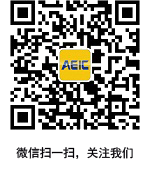Prof.KING-NING Tu
University of California, Los Angeles, USA
Title: Artificial intelligence in interconnect reliability
Author: K. N. Tu, Dept. of Materials Science and Engineering, UCLA
Alice Hu, Dept. of Biomedical and Mechanical Engineering, City U, HK
Abstract: In the big data era, the use of consumer electronic products in all aspects of our life is manifested by the ubiquitous presence of mobile devices. How to sustain the continuing demand for smaller size, more functionality, lower power consumption, and reduced cost is challenging because Moore’s law is near its end. A paradigm change, from 2D IC to 3D IC, is occurring in microelectronic industry. But the stacking of thin chips makes Joule heating to be the most serious yield and reliability issue. For example, a temperature gradient must exist in order to remove heat, but the difference of 1°C across a μ-bump of 10 µm in diameter has a temperature gradient of 1000 °C/cm, which can cause thermomigration. Furthermore, system level electromigration occurs in weak links, and fracture occurs in brittle intermetallic μ-bumps. In this talk, artificial intelligence (AI) enhanced reliability of interconnects will be discussed with the use of x-ray based graphic processing unit (X-GPU).

A.Prof.Shadi M.S. Hilles
Al-Madinah International University, Malaysia
Title: Impact 4.0 industrial revolution in Education
Abstract: 4.0 Industrial revolution is leading the Intelligent Information Society and the Digital Transformation. 4.0 industrial revolution has been introduced by Germany group in academic, business and politics to adopted new era of high tech-strategy for 2020, the speech is about the impact of 4.0 industrial revolution to enhance method of teach in academic field
4.0 industrial revolution it’s called also cyber physical system and based on nine pillars those pillars are called embedded system, the Internet of Things one of the most important advance technology which allow interconnected smart and non-smart device (physical such as 3D printing, Advanced Robotics New Materials such as polymers, nanomaterials like
quantum, and biological such as Genetic analysis, Brain interfaces, mind control of objects, EU Brain project, US Brain initiative, and digital such as mobile, smart sensors, smart devices, Arduino, heterogeneous computing) to connected to each other using 5G wireless network which is 70 times faster than 4G, Cloud computing, augmented realities, AI artificial Intelligent are a key component of Industry 4.0, the internet of things IoT is integrated into the manufacturing, processing and logistics. the IoT is refer to physical devices that are able to connect and exchange data.
IoT will consist of about 30 billion objects by 2020” and that “the global market value of IoT will reach $7.1 trillion” by the same year. There is one more term called internet of everything IoE is considered a superset of IoT, Cisco, first coined the term the Internet of Everything, process , people, data, and things together to make networked connections more relevant and valuable. However the Big data could be reach any data from any resources which allow big data to analysis and evaluate with small error in order to allow robots to achieve multiple tasks and independent making decision without human hand, One of embedded advance technology is cyber security where is cyberattacks became much more smart with IoT and can exploit the vulnerabilities of critical infrastructures such as the energy, transportation and communications sectors and seriously undermine military mission success, therefore cybersecurity used the cryptography algorithm and machine learning, AI for cyberspace in order to reduce threats from cyber attach.
The benefits of moving on to industry 4.0 are Increase flexibility, productivity, efficiency, quality, reduced time to market, more R&D and activities, development of new skills.
However, the new era of modernization of education is focused on Industry 4.0 areas. To offer and enhancing transdisciplinary learning which is called 21st century curriculum, for example, to prepare students in “Science Technology Engineering Mathematics” which is called STEM, for their future jobs and as well, teachers need to impart knowledge on real-life problem solving through creative and innovative projects and as well practice oriented learning in an environment close to industrial reality for facilitating effective knowledge by using advance technology.
The impact of Internet of Things not only to help internal operations, and also through the use of the cloud environment where data is stored, equipment and operations can be optimized by leveraging the insights of others using the same equipment, moreover, Internet has deeply rooted itself into our schools, and e-learning has become common practice, The rise of mobile technology and the IoT allows schools to improve the safety of their campuses, keep track of key resources, and enhance access to information, Roles of IoT in Education in modern college has the facilities functioning easily that provide a better stage of getting to know personally. Moreover using AI became leveraging the best attributes of machines and teachers, the vision for AI in education is one where they work together for the best outcome for students. Augmented reality AR as the various ways to enhancing method of study, especially for theoretical subjects which allow user to interact with 3 dimension data and its could grant students extra digital information in 3D about any subject, and make complex information easier to understand. Using augmented Reality in classroom lessons could give students’ more attention, motivation and as well interaction.
Finally it will be important to have technology roadmaps for education based on Industrial revolution 4.0 for modernization methods of study with new interdisciplinary programme.






